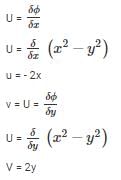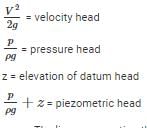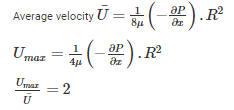Fluid Mechanics - 1 - Mechanical Engineering MCQ
20 Questions MCQ Test SSC JE Mechanical Mock Test Series 2025 - Fluid Mechanics - 1
What is the specific gravity of a fluid whose specific weight is 7.85 kN/m3?
A pump delivers water at a rate of 0.025 m3/s against a head of 30 m. If the overall efficiency of the pump is 75%, the power required by the pump is:
The velocity potential which follow the equation of continuity is ________
When a liquid rotates at a constant angular velocity about a vertical axis as a rigid body, the pressure
Pressure of 200 kPa is equivalent to the head of z metre of liquid having relative density 1.59. The value of z (m) is _____.
The barometric pressure at the base of a mountain is 750 mm Hg and at the top 600 mm Hg. if the average air density is 1 kg/m3, the height of the mountain (in m) is approximately
The centre of pressure on inclined immersed surface remains valid for the centre of pressure on vertical immersed surface, if the angle (θ) at immersed surface with liquid surface is:
The flow in which the velocity vector is identical in magnitude and direction at every point, for any given instant, is known as
In Kaplan turbine runner, the number of blades is generally of the order _____.
ln a two-dimensional flow, where u is the x-component and v is the y-component of velocity the equation of streamline is given by
Kinematic viscosity of air at 20°C is given to be 1.6 × 10-5 m2/s. Its kinematic viscosity at 70°C will be approximately
If for a fluid in motion, the pressure at a point is same in all directions, then the fluid is
A fully developed laminar viscous flow through a circular tube has the ratio of maximum velocity to average velocity as
The diameter of a soap bubble which has an inside pressure of 2.5 N/m2 over the atmospheric pressure and a surface tension of 0.0125 N/m is
|
3 videos|1 docs|55 tests
|








 ⇒ Height of mountain = 2040 m
⇒ Height of mountain = 2040 m














 constant along a stream line holds true for
constant along a stream line holds true for




 each term represents:
each term represents: then it has units of total energy per unit volume.
then it has units of total energy per unit volume. , has units of energy per unit weight.
, has units of energy per unit weight.















